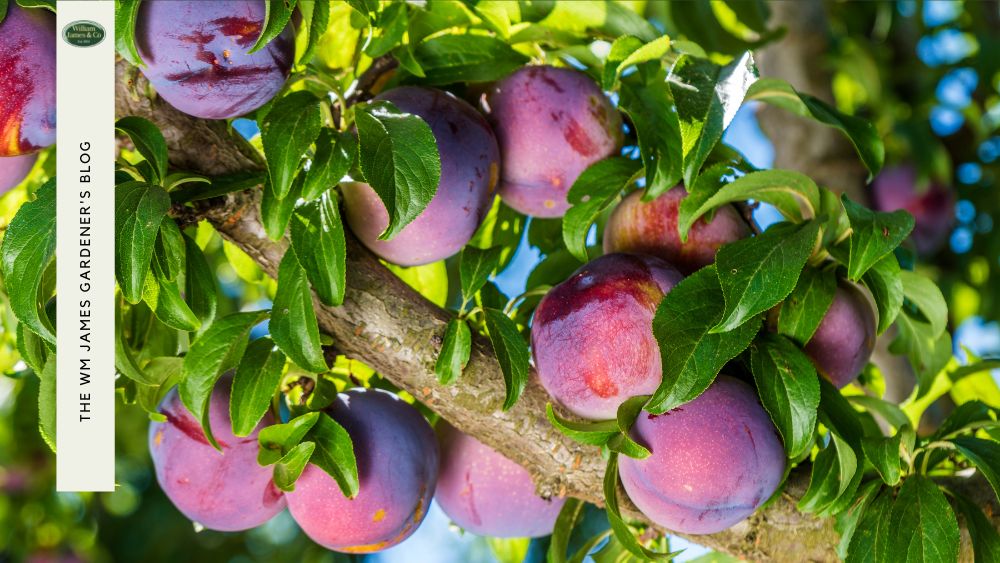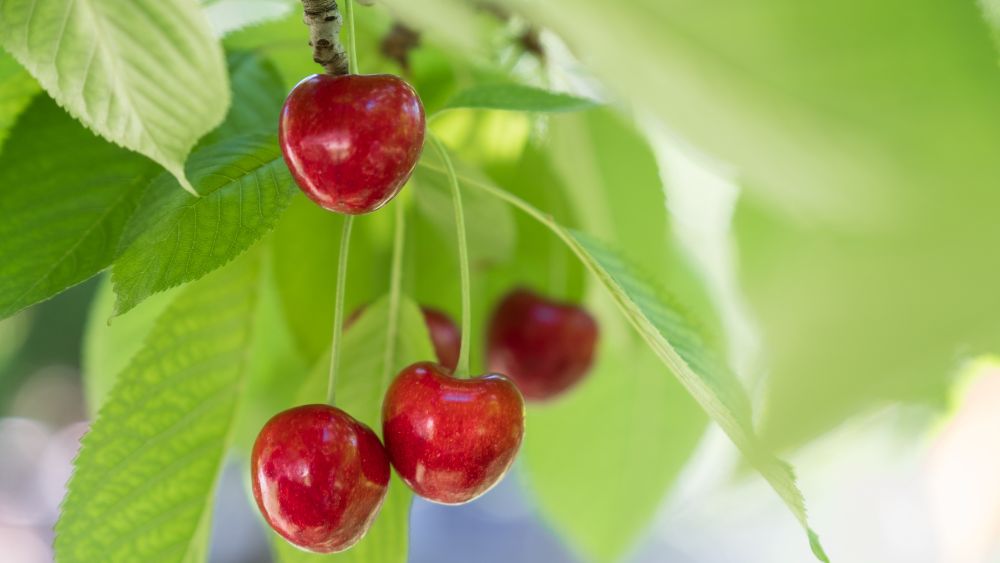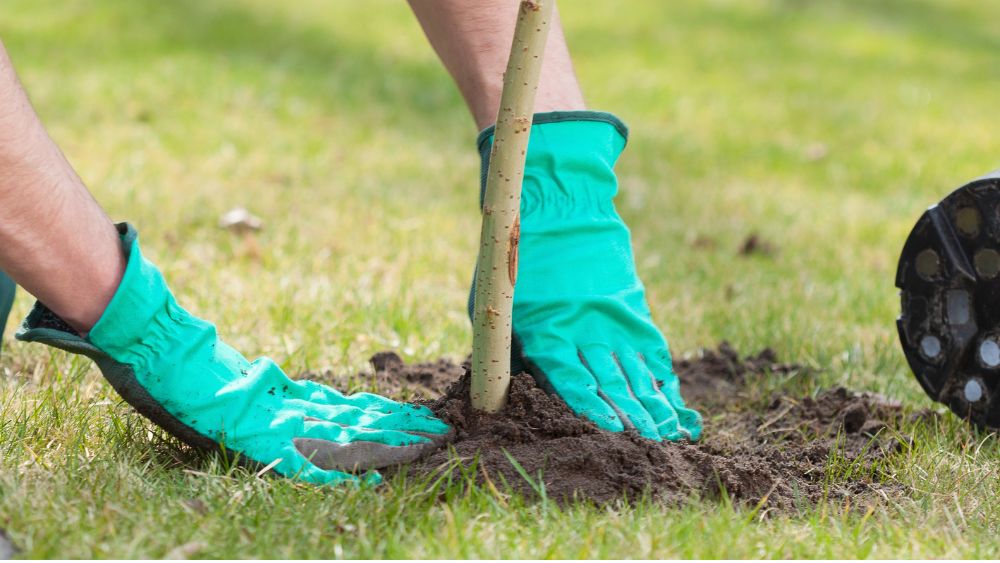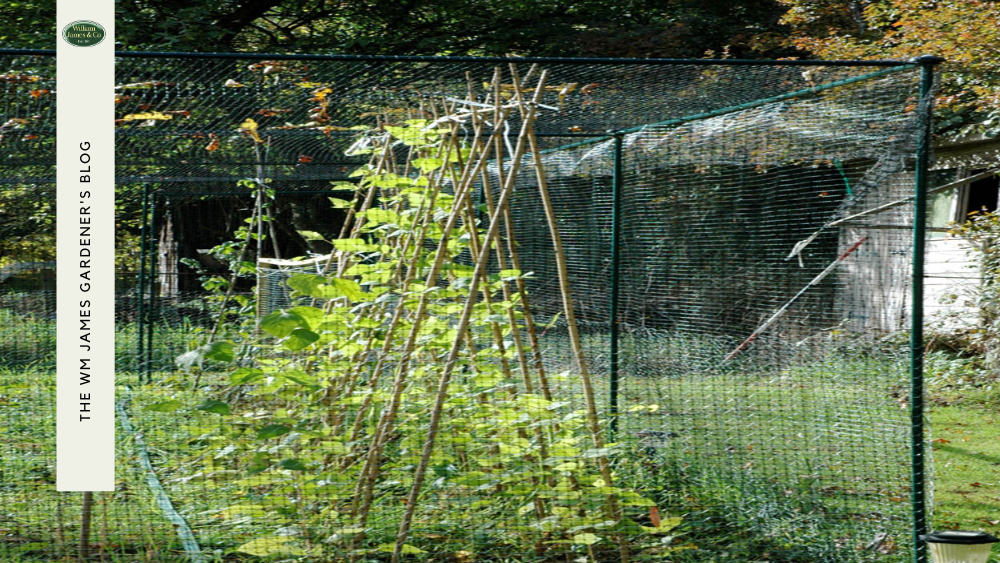We use cookies to make your experience better. To comply with the new e-Privacy directive, we need to ask for your consent to set the cookies. Learn more.
Plant Bare Root Fruit Trees & Enjoy Lucious Homegrown Fruit
- Admin
- WM James Gardening Blog
- 19 Dec 2022
-
35views

If you feel as if your garden is lacking in fruit, or you simply want to switch up your crops, planting bare root fruit trees is a great option. Not only are they easy to grow, but you'll also get to enjoy homegrown fruit right from your own garden!
They can add a beautiful focal point, provide shade and privacy, and of course, produce delicious fruit. Read on to learn more about how to plant and care for your new fruit tree.
What are Bare Root Fruit Trees?
Bare-root fruit trees are a type of fruit tree that is grown without soil - hence the name 'bare root', because the roots are not hidden away in the soil. These fruit trees are grown in nurseries in open ground and will be 'lifted' (a process of removing the tree from the ground) and are then sent out to customers, where they are then planted in soil. Once they take root, they will begin to produce fruit.
Bare root trees should be bought and planted between the months of November and March - this is when they are 'dormant', meaning that they are not actively growing. This is the best time to plant them, as they can be easily moved and replanted without damaging their roots.
They will need to be planted in a spot where full sun is available for the majority of the day, as most fruit trees need at least six hours of sunlight each day in order to produce fruit. You will also need to bear in mind the growth of the branches when picking a planting spot - you don't want the branches to be obstructed by buildings or other trees.
Varieties of Bare Root Trees
There are many different types of bare-root fruit trees that you can buy, depending on what sort of fruit you would like to grow. Some of the most popular varieties include:
- Apples
- Pears
- Cherries
- Plums
- Peaches
- Nectarines
They are a fantastic way of getting started with growing your own fruit, as they are much cheaper than buying pot grown trees. They are very easy to care for, as long as you keep an eye on them and water them regularly - especially during the first few years after planting.
Not to mention they make your garden look fantastic too! The fruit buds will start to swell in late winter, and the flowers will appear in early spring. By summer, you should start to see your first fruits beginning to form.
Late July/August is when most fruit trees will be in full 'fruit' - meaning that there will be an abundance of fruits to pick!
Ornamental bare-root trees are also available, which can make a beautiful addition to your garden. Some of the most popular varieties include:
- Japanese Maples
- Dogwoods
- Crabapples
- Redbuds
- Serviceberries
These trees are lovely and provide interest in the garden all year round, with their different coloured leaves, flowers and fruits.
The Difference Between Bare Root and Pot-Grown Fruit Trees
Although it might seem like more work to plant a bare root tree, they are actually much easier to take care of than pot-grown trees. This is because the roots are not restricted in a pot, so they can grow outwards and downwards, creating a stronger and healthier tree.
Bare root fruit trees will also produce fruit much sooner than pot-grown trees, as they are not restricted by a pot. Pot-grown trees can take up to four years to produce fruit, whereas bare root trees will start fruiting in their second year.
Generally, bare root trees also cheaper, as they are easier to produce. Nurseries can grow more bare root’s in the same amount of space than they can pot-grown trees.
How to Plant a Bare Root Fruit Tree
Before you get started planting your bare root fruit tree, you will need to pick out a suitable placement in your garden where the tree will get full sun for most of the day. You will also need to make sure that there is enough space for the roots and trunk of the tree, as well as the branches, once it starts to grow.
Good preparation of the soil you will plant your tree in is important, as this will help the tree take root and establish itself quickly. The soil should be loose and crumbly so that the roots can easily spread out. If the soil is too compacted, it will restrict the growth of the roots, and the tree will not be able to take in enough water or nutrients.
Steps for Planting Bare Root Fruit Trees
Step 1: Dig a hole that is twice the width of the fruit tree roots and just as deep.
Step 2: Loosen the soil around the edges of the hole with a fork to make it easier for the roots to spread out.
Step 3: Place the bare root fruit tree in the hole so that the roots are spread out evenly. The graft union (the point where the rootstock and scion join) should be about 2-3 inches above the soil line.
Step 4: Backfill the hole with the soil, using your hands to firm it around the roots as you go. Make sure that there are no air pockets around the roots, as this could cause them to dry out.
Step 5: Water the tree well, using a watering can with a rose attachment to avoid damaging the roots.
Step 6: Apply a layer of mulch around the base of the tree, keeping it away from the trunk. This will help to keep the roots cool and moist, and will also stop weeds from competing with the tree for moisture and nutrients.
You should water your bare root fruit tree regularly during its first year, especially during dry periods. After the first year, you can reduce the amount of watering, but make sure to give it a good drink during prolonged dry spells.
Fertilising Bare Root Fruit Trees
It is important to fertilise your bare root fruit tree regularly, as this will help it to grow strong and produce a good crop of fruit. You can use a general purpose fertiliser or you can get a specific fruit tree fertiliser.
You should apply fertiliser to your bare root fruit tree every fortnight during the growing season (spring and summer), using double the amount recommended on the packet. In autumn, you can reduce the frequency to once a month.
Pruning Bare Root Fruit Trees
Pruning is an important part of tree care, as it helps to promote strong growth and bountiful fruit production. You should prune your bare root fruit tree in late winter or early spring, before the growing season begins.
The amount of pruning you need to do will depend on the type of fruit tree you have. For example, apples and pears need fairly heavy pruning, whereas plum and cherry trees only need light pruning.
If you are not sure how to prune your particular tree, you can consult a gardening book or ask for advice at your local garden centre.
How to Protect Your Fruit Tree with Garden Netting
It's no secret that fruit trees often fall victim to pesky birds and other animals that would love to feast on your hard work. To prevent this, you can protect your tree with garden netting.
Garden netting comes in a variety of sizes and can be customised to fit the size and shape of your tree. It is important to choose a heavy-duty netting that will withstand the elements and last for many years, but not too heavy that it will damage the branches of your tree.
When putting up the netting, make sure that it is pulled taut so that there are no gaps where birds or animals can get through. It is also a good idea to secure the netting to the ground with pegs or wire so that it cannot be blown away in strong winds.
Here at William James, we stock a wide range of garden netting to suit a number of gardening situations. We have garden netting specifically suited to protecting fruit trees, so you can be confident that your tree will be safe from hungry critters and birds. Shop our range of garden netting online here.
Final Thoughts: Growing Your Own Bare Root Fruit Tree is Easy!
A bare root fruit tree can add beauty, shade and delicious fruit to your home. By following the simple steps in this guide, you can easily grow your own bare root fruit tree. All you need is a little patience and care, and you'll be rewarded with a healthy tree that will produce fruit for many years to come.
Don't forget to protect your tree with garden netting to keep the birds and animals at bay.
FAQs
When should I buy a bare root tree?
You should purchase and plant a bare root fruit tree between November and March when the tree is dormant. This is the best time to plant as the roots will have less water loss and are less likely to become damaged.
Are bare root fruit trees better than potted?
Bare root trees are typically cheaper than potted trees, but they ideally should be planted immediately after they arrive. Potted trees can be kept for longer periods of time before planting.
How do I store a bare root fruit tree before planting?
Ideally, you should plant your bare root tree immediately after receiving it. If you need to store it for a short period of time, store the tree in a cool dark place such as a garage or shed.
When should I plant a bare root fruit tree?
The best time to plant a bare root fruit tree is between November and March.
















